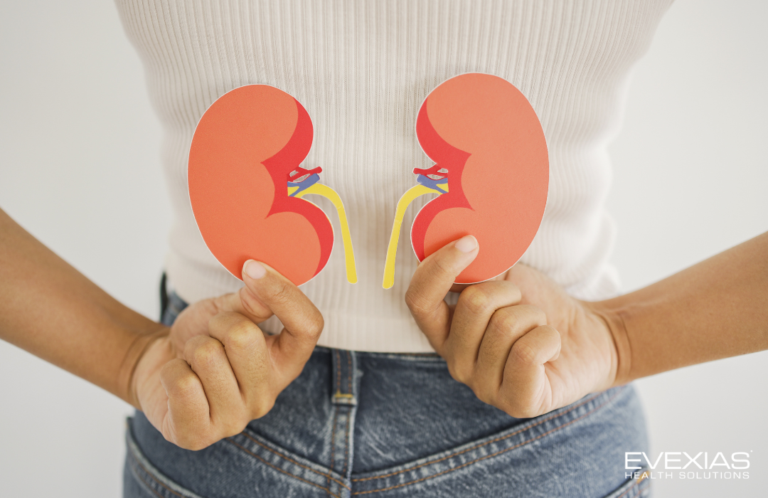Article Reviewed By The Medical Faculty and Advisory Review Board
We spend a lot of time talking about pellet therapy here at EvexiPEL and have even written a few blog posts about why pellet therapy could be a good choice for you, and how exactly it works.
Even so, we’ve still found pellet therapy is a new concept for a lot of folks and can be a little confusing. Talking about inserting a pellet (what even is a pellet, anyway??) into someone’s skin can sound pretty weird if you don’t have all the information.
So in this post, we’re going to break it down for you. We’ll answer questions like:
- What are pellets made of?
- Is it safe to insert them into my skin?
- How long will their effects last?
- Has pellet therapy been proven to be safe and effective?
So without further ado, let’s get started!
1. What Are Pellets Made Of?
Pellets are made of hormones. Specifically, either the hormone estradiol or testosterone. The hormones are fused into small cylindrical shapes, a little larger than a grain of rice. Licensed pharmacists can only make pellets.
2. How Are Pellets Inserted into the Skin?
Pellet insertion is generally done using local anesthesia. It is a short, relatively painless procedure.
Your provider will make a small incision in your skin (usually the hip or lower abdominal wall) and insert the pellet there.
The placement and dosage of the pellet will likely vary slightly depending on the needs of the patient.
3. Is the Procedure Safe And Are Their Side Effects?
Like many medical procedures, pellet therapy is safe if you undergo the procedure with the help of a licensed procedure.
We take our provider selection and training very seriously at EvexiPEL, and will always take the utmost precautions to ensure that our patients are getting the very best and very safest care.
Our providers will always offer a clean, safe, and comfortable environment, and will always look at each patient as an individual. This means that providers will talk with patients extensively to devise a treatment plan that works for them specifically.
All that being said, there can be side effects of pellet therapy. However, if you take the necessary precautions your provider will discuss with you, you should not have any serious issues.
Precautions include avoiding prolonged exposure to water (baths, hot tubs) and avoiding vigorous physical activity for one week at the most.
Side effects can include skin discoloration, and minor bruising and bleeding. If your provider thinks you may be predisposed to developing an infection due to pellet insertion, they may choose to give you antibiotics.
4. What Happens After Pellet Insertion?
There will likely be an adjustment period immediately following pellet insertion, both mentally and physically.
Patients can experience any combination or degree of breast tenderness, temporary weight gain, and body toning.
Some patients report feeling a very mild, short-lived “puberty” as their hormones adjust to normal levels. Also, hormone receptors may be sensitive at first, so give yourself a break if your emotions and reactions to things seem a little off for a few days.
After the initial recovery period, you will likely begin to notice the positive changes you were hoping for:
- Higher energy levels
- Better sleep
- An increase in overall happiness
Also, many patients will notice increased strength, which is a result of more muscle mass and less fatty tissue.
Other physical attributes such as skin tone may also improve. Many patients who were suffering from a loss of libido will also notice better overall sexual health and performance. These changes can take anywhere from one day to two weeks to take effect.
5. How Long Will the Effects of Pellets Last?
Length of the effects of pellet therapy is slightly different for men and women.
- For women, the pellets will usually last for 3-5 months.
- For men, they can last up to 5-6 months.
Pellets do not need to be removed after this period; they will dissolve into your skin.
6. Is Pellet Therapy a Proven Method to Address Hormonal Imbalances?
Yes! Although it has undergone a relatively recent peak in popularity, bio-identical hormone replacement therapy (or pellet therapy) has been around since the 1930s.
The current increase in practitioners is in part due to studies that have revealed that pellet therapy using natural hormones can be a safer, more effective way to control hormone levels than the previously used synthetic approach.
As one of the first practitioners to rediscover the benefits of pellet therapy, our founder Terri DeNeui has developed a tried and true method to balance hormones.
We Can Help
Whatever you may need, we’ll be sure to give you the individual attention (including follow-up visits) you deserve.
We won’t be satisfied until we know that you’re feeling your best. And of course, we will help give you whatever tools you need to undergo your lifestyle changes.
It may also take follow-up visits and adjustments to your treatment over time, but in our opinion, that’s a small price to pay for getting your quality of life back!






